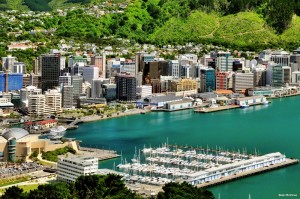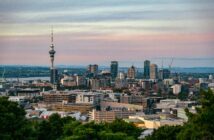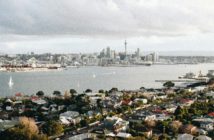Paying a premium for greater resilience could be among the long-term outcomes of last year’s November 14 quake, says a Wellington CBD office leasing specialist
Steve Maitland of Colliers International says organisations will also look beyond the CBD as satellite offices become a more attractive option.
His comments come after the first post-quake survey of Wellington office vacancies found the most acute shortage of space in almost a decade.
The survey by Colliers International’s Research and Consultancy team revealed only 7.8 per cent of office space in Wellington’s CDB was vacant last month, down from 10.5 per cent shortly before last year’s quake, and 11.9 per cent in June 2016.

It is the first time the vacancy rate has dipped below 10 per cent since December 2010, when the vacancy rate was 9.9 per cent.
Much of the shortage is due to seismic damage following the magnitude 7.8 earthquake, which struck near Kaikoura on November 14, 2016.
Maitland says the quake had turned the market on its head.
“Up until November, we were advising clients that there was plenty of space available, with more premium offices becoming available from late 2017 through to 2019.
“It really was a tenants’ market, with landlords offering incentives and tenants able to negotiate short-term leases.”
Now, the market has swung back in favour of building owners.
“Some landlords have been charging a 10 per cent premium for leases of fewer than three years – so if businesses want short-term leases while they assess their post-quake options, they have to pay more.
“Other landlords have used the shortage to negotiate better lease terms. They’re turning down six month term offers and negotiating two year terms – and tenants are obliging.
“Along with this, rents are going up. I wouldn’t call it price-gouging – it’s pure supply and demand. We’re not seeing it wholesale, but you might get a snowball effect.”
Maitland says the lack of options means businesses have been looking beyond the CBD.
“They’re looking out to the Hutt Valley, Porirua and Kapiti Coast areas. They’re also looking at multiple satellite offices, rather than a single location.”
But Maitland doubts there will be a wholesale shift out of the CBD like Christchurch experienced after its quakes, when many businesses moved to Riccarton.
“There really aren’t enough quality sizable options outside the central city.”
Maitland says the worst case scenario would be a large business leaving town entirely. However, no businesses have so far indicated they would do so.
The quake would force businesses to rethink quality, however.
“People might start paying a premium for a greater level of resilience.”
Maitland expects demand for office space would ease as new buildings became available within the next year.
A new 14-storey tower at 20 Customhouse Quay, anchored by tenants Deloitte and IAG, is due for completion in late 2017, while the new PWC Centre at 10 Customhouse Quay will be completed by mid-2018.
“When those projects are complete, office space will become available in the tenants’ old buildings. But the real issue is the here and now – it’s like a game of musical chairs.”
The Colliers International survey found Central Wellington had 108,300sq m of vacant office space last month, down from 154,536sq m shortly before the quake, and 175,472sq m in June 2016.
Since the quake, 97,125sq m of total office stock (7 per cent) has been removed, with seismic damage being the largest factor



